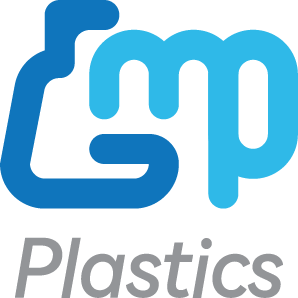Hey there, science enthusiasts! Ever wondered how scientists extract DNA—the blueprint of life—from a tiny sample of cells? Well, buckle up, because today, we’re taking a deep dive into DNA purification, the magical process that turns a biological soup into pure, research-ready genetic material!
Whether you’re a budding scientist, a biotech pro, or just a curious mind, this guide will break it all down with fun analogies, cool science facts, and easy-to-understand explanations.
Ready? Let’s get our science on!
What is DNA Purification and Why Do We Need It?
DNA purification is like panning for gold—except instead of sifting through riverbeds, we’re separating DNA from proteins, lipids, and other cellular debris. Scientists need pure DNA for all kinds of applications, like:
✅ Genetic research – Studying genes and mutations.
✅ Forensic science – Identifying suspects and solving crimes.
✅ Medical diagnostics – Detecting genetic disorders and infectious diseases.
✅ Biotechnology – Engineering organisms to produce medicines, fuels, and more!
To study DNA, we need it clean and intact—no extra junk allowed! That’s why DNA purification techniques are a big deal in the world of molecular biology.
How Does DNA Purification Work?
At its core, DNA purification follows a three-step process:
1️⃣ Lysis (Breaking Open the Cell!)
2️⃣ Removal of Contaminants (Proteins, RNA, and Cell Debris—Be Gone!)
3️⃣ DNA Precipitation or Binding (Extracting the Genetic Gold!)
There are several methods to achieve this, each with its own pros and cons. Let’s explore them!
Method 1: Column-Based DNA Purification (Silica Magic!)
Imagine DNA as a picky traveler that only likes certain hotels (silica membranes). This method traps DNA on a silica filter while washing away unwanted guests like proteins and salts.
How It Works:
1️⃣ Lyse the cells – Break them open with buffers or enzymes.
2️⃣ Bind DNA to silica – Add a special solution that makes DNA stick to the silica column.
3️⃣ Wash away impurities – Unwanted molecules are flushed out while DNA stays behind.
4️⃣ Elute pure DNA – A clean buffer releases the DNA, making it ready for experiments!
Pros:
✔️ High purity!
✔️ Fast and easy!
✔️ Works well for small or large samples.
Cons:
❌ Requires special kits.
❌ Can be pricier than other methods.
Method 2: Organic Extraction (Phenol-Chloroform Method)
This classic technique uses chemicals to separate DNA from cellular junk. Think of it as a chemical sorting game—DNA goes into one layer, proteins into another!
How It Works:
1️⃣ Lyse the cells – Open them up using detergents or enzymes.
2️⃣ Add phenol and chloroform – These chemicals separate DNA from proteins and lipids.
3️⃣ Centrifuge the mixture – DNA moves into the upper (aqueous) layer, while proteins sink below.
4️⃣ Precipitate DNA – Add ethanol or isopropanol to make the DNA form a solid pellet.
5️⃣ Wash and resuspend – The pellet is washed and dissolved in a clean buffer.
Pros:
✔️ Yields high-quality, long DNA fragments!
✔️ Great for large genomic DNA samples.
Cons:
❌ Uses toxic chemicals (handle with care!).
❌ Time-consuming compared to column-based kits.
Method 3: Magnetic Bead-Based DNA Purification (DNA on a Leash!)
Ever used a magnet to pick up paperclips? That’s how this method works—but with DNA molecules instead!
How It Works:
1️⃣ Lyse the cells – Break them open to release DNA.
2️⃣ Add magnetic beads – Beads coated with DNA-binding material capture the DNA.
3️⃣ Use a magnet – The beads (with DNA attached) are pulled to the side, leaving impurities behind.
4️⃣ Wash the DNA – Remove contaminants while keeping the DNA on the beads.
5️⃣ Elute the DNA – A buffer releases the purified DNA for use.
Pros:
✔️ Fast and automation-friendly!
✔️ No harmful chemicals!
✔️ Works well with small or degraded DNA samples.
Cons:
❌ Can be expensive for high-throughput labs.
Comparing DNA Purification Methods: Which One to Choose?
| Feature | Silica Column | Phenol-Chloroform | Magnetic Beads |
|---|---|---|---|
| Purity | High | Very High | High |
| Ease of Use | Easy | Complex | Very Easy |
| Speed | Fast | Slow | Fast |
| Automation-Friendly | Yes | No | Yes |
| Cost | Moderate | Low | High |
If you need quick and clean DNA, go for silica columns.
For ultra-pure, high-molecular-weight DNA, organic extraction is the way.
And if you love high-tech, automated methods, magnetic beads are your best bet!
How to Perform DNA Purification (Step-by-Step Guide!)
Step 1: Sample Preparation
- Collect cells (from bacteria, plants, animals, or forensic samples).
- Homogenize or grind the tissue if needed.
Step 2: Cell Lysis
- Use buffers, enzymes, or mechanical disruption to break open the cells.
Step 3: Remove Contaminants
- Choose a method (column, organic, or magnetic beads) to separate DNA from proteins and RNA.
Step 4: Precipitate or Elute DNA
- Depending on the method, use alcohol precipitation or a buffer to collect the DNA.
Step 5: Analyze and Store DNA
- Check purity using a spectrophotometer (260/280 ratio).
- Store DNA at -20°C or -80°C for long-term use.
Final Thoughts: DNA Purification for the Win!
DNA purification is like mining for genetic gold—using science to extract the most valuable information from cells! Whether you’re working in a research lab, diagnosing diseases, or solving crimes, clean DNA is the foundation of countless scientific breakthroughs.
So the next time you hear about DNA sequencing, forensic investigations, or medical genetics, remember—it all starts with DNA purification!
And as always… SCIENCE RULES! 🚀🔬




